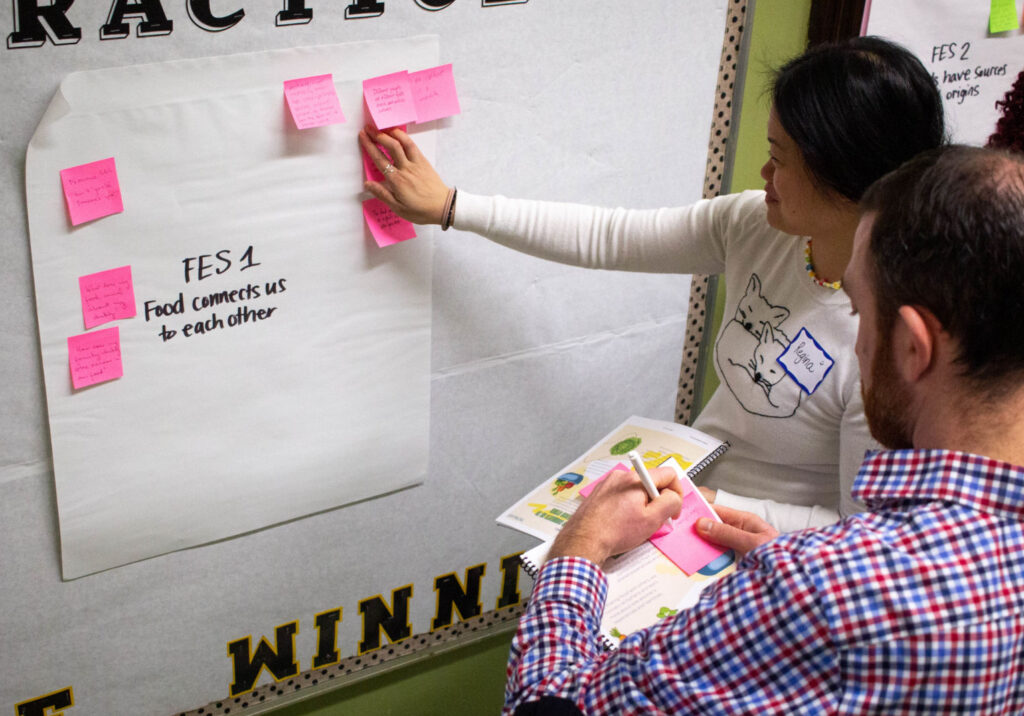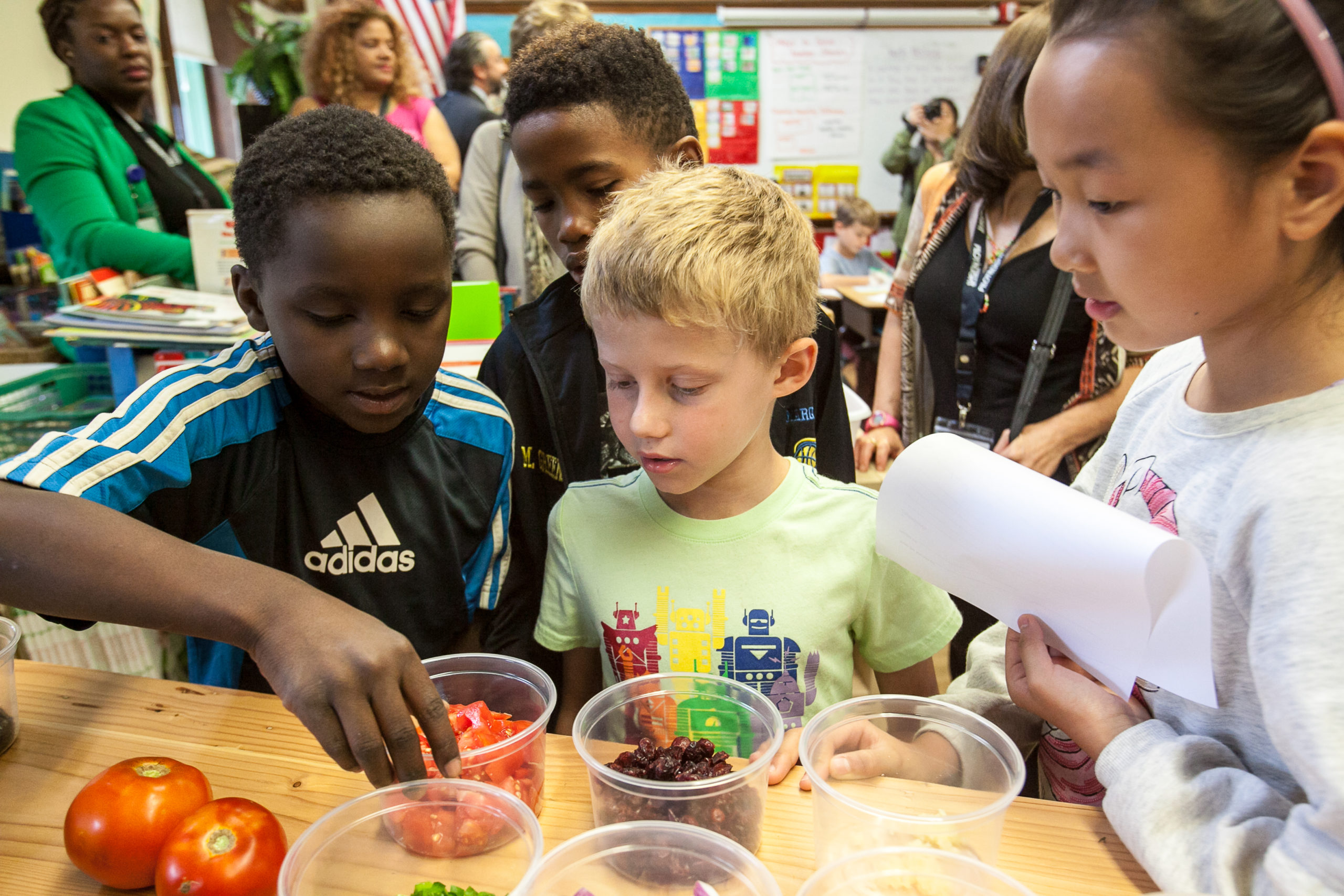The Food Education Standards
The Food Education Standards (FES) are 7 educational standards that encompass the benchmarks of the knowledge, skills, and attitudes necessary to the development of a holistic, positive relationship with food.
Developed by teachers and for teachers, the Food Education Standards were developed to support educators implementing Food Education in their classrooms. Curious to about why Food Education is important? Read more.

Click each link below to learn more about each Food Education Standard and how they work inside classrooms across the country.
1. Food connects us to each other.
By sharing food with others, we connect as humans and learn more about one another’s experiences and identities.
2. Foods have sources and origins.
By honoring and acknowledging the land and people who grow and cultivate food, we can better understand the context and stories of cultures and trace their movements over time.
3. Food and the environment are interconnected.
By recognizing food (in all its forms) as a part of an ecosystem, we can analyze the interdependence of all living organisms on one another for energy and better address the effects humans have on the environment.
4. Food behaviors are influenced by external and internal factors.
By identifying internal and external factors that influence food choices, we can think critically about our own individual food behaviors while taking into account environmental, social, and emotional factors that determine our relationship with and access to food.
5. Food impacts health.
By building knowledge around how different foods interact with the body to sustain us, we can identify the benefits of nutrient-dense foods and their effects on our bodies and minds.
6. We can make positive and informed food choices.
By experiencing autonomy over our bodies with access to nutritious and vibrant food, we are empowered to make positive and informed food choices in our lives.
7. We can advocate for food choices and changes that impact ourselves, our communities, and our world.
By making our own food choices heard and centering the voices of young people, we can help young people build an equitable food future that is their own.
The FES serve as the foundation for all of Pilot Light’s programs, lessons, and initiatives. Shout-out your favorite Food Education Standard on social media and tag @pilotlightchefs to let us know why you think the Standards are important!
Utilizing the Standards
The Standards documents were designed by a team of teachers knowledgeable in Pilot Light’s food education model to provide detailed guidelines for curriculum development, instruction, and assessment of food education in the classroom. Each Standard is divided into measurable competencies by grade level bands: K–2, 3–5, 6–8, and 9–12. Within each grade-level band, examples of parallel cross-curricular learning standards have also been identified to assist teachers in lesson development. Additionally, each Standard provides grade-band appropriate examples of real-world experiences, along with sample lesson plans for reference and inspiration.

